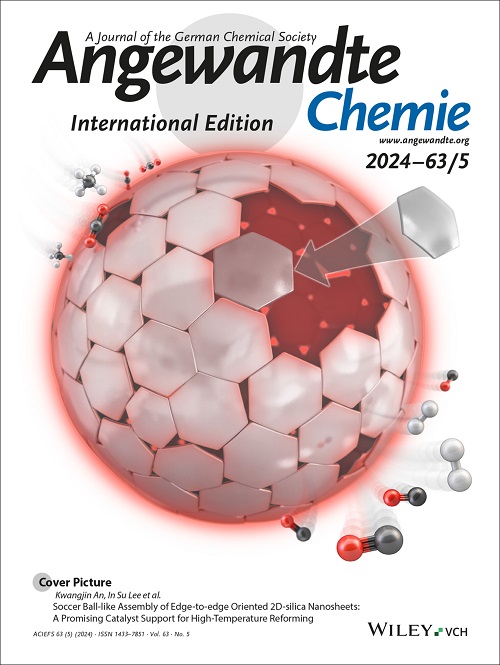Spinel‐Layered Heterostructure Enables Reversible Oxygen Redox in Lithium Manganese Oxide
IF 16.9
1区 化学
Q1 CHEMISTRY, MULTIDISCIPLINARY
引用次数: 0
Abstract
Lithium‐rich manganese‐based layered oxides (LRMOs) have emerged as promising cathode materials for next‐generation lithium‐ion batteries (LIBs), primarily due to their exceptional capacity originating from oxygen redox chemistry. While Li2MnO3 (LMO) has been conventionally identified as the oxygen redox‐active component in LRMOs, this layered material shows neither bulk redox activity nor reversible anion redox behavior in the absence of other transition metals (e.g., Ni and Co). Herein, we report a structural‐engineered lithium manganese oxide with spinel‐layered heterostructures (designated as LMO‐SH), which exhibits reversible oxygen redox activities between lattice oxygen (O2‐) and molecular oxygen (O2) ‐ the first documented instance of such redox behavior in a manganese‐based material. Through combining experimental characterization and theoretical modeling, we establish that the interfacial architecture between the spinel and layered phases facilitates the Li+ diffusion kinetics while simultaneously activating bulk oxygen redox processes. This mechanistic understanding not only advances fundamental knowledge of redox chemistry in LMO‐based materials but also establishes new design principles for developing high‐capacity cathodes through strategic phase engineering.尖晶石层状异质结构实现了锂锰氧化物的可逆氧氧化还原
富锂锰基层状氧化物(LRMOs)已成为下一代锂离子电池(LIBs)极具前景的正极材料,主要是由于其源自氧氧化还原化学的卓越容量。虽然Li2MnO3 (LMO)通常被认为是LRMOs中的氧氧化还原活性成分,但在缺乏其他过渡金属(如Ni和Co)的情况下,这种层状材料既没有整体氧化还原活性,也没有可逆阴离子氧化还原行为。在此,我们报道了一种具有尖晶石层状异质结构的结构工程锰酸锂(LMO - SH),它在晶格氧(O2‐)和分子氧(O2‐)之间表现出可逆的氧氧化还原活性,这是锰基材料中首次记录到这种氧化还原行为的实例。通过实验表征和理论建模相结合,我们确定尖晶石和层状相之间的界面结构有利于Li+扩散动力学,同时激活大量氧氧化还原过程。这种机制的理解不仅推进了LMO基材料氧化还原化学的基础知识,而且通过战略相工程为开发高容量阴极建立了新的设计原则。
本文章由计算机程序翻译,如有差异,请以英文原文为准。
求助全文
约1分钟内获得全文
求助全文
来源期刊
CiteScore
26.60
自引率
6.60%
发文量
3549
审稿时长
1.5 months
期刊介绍:
Angewandte Chemie, a journal of the German Chemical Society (GDCh), maintains a leading position among scholarly journals in general chemistry with an impressive Impact Factor of 16.6 (2022 Journal Citation Reports, Clarivate, 2023). Published weekly in a reader-friendly format, it features new articles almost every day. Established in 1887, Angewandte Chemie is a prominent chemistry journal, offering a dynamic blend of Review-type articles, Highlights, Communications, and Research Articles on a weekly basis, making it unique in the field.

 求助内容:
求助内容: 应助结果提醒方式:
应助结果提醒方式:


